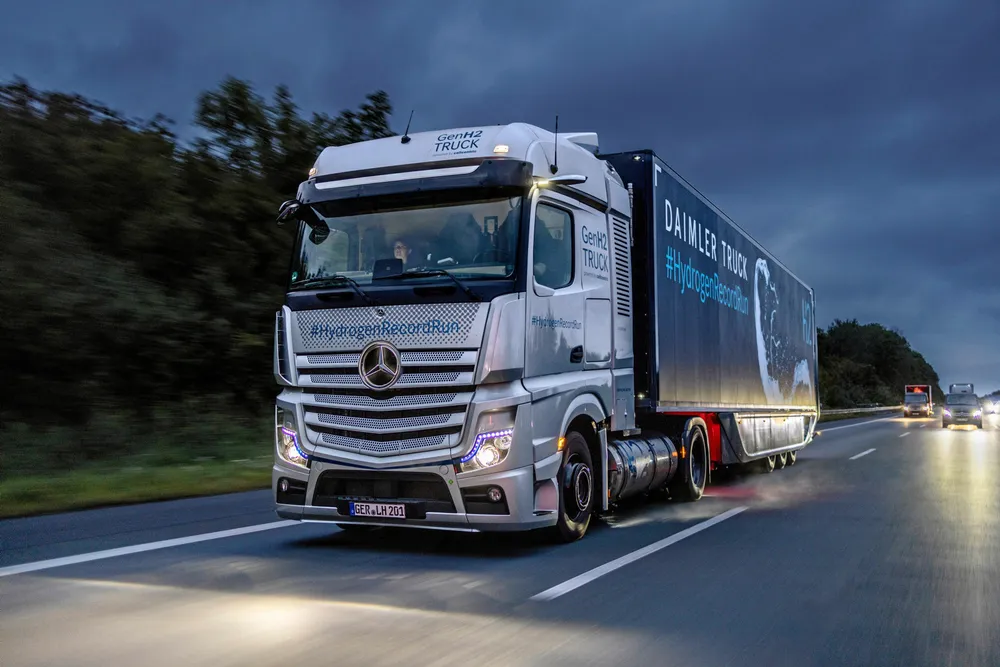‘Record run’ | Daimler’s Mercedes-Benz green hydrogen truck drives over 1,000km on a single tank
Liquid H2-powered fuel cell journey enabled by ‘well insulated tanks’ that prevent warming, claims German auto firm

Liquid H2-powered fuel cell journey enabled by ‘well insulated tanks’ that prevent warming, claims German auto firm
